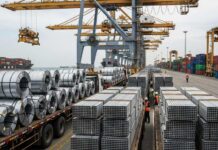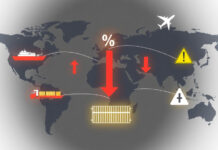The Role of Supply Chain Financing in Navigating Tariff Volatility
With said global tariff policies still in flux, large organizations are also reassessing their supplier relationships and payment strategies. This environment of ambiguity has catapulted supply chain financing to center stage as an essential means to optimize working capital and critically balance the economic consequences of rising prices.
The Financial Sector’s Opportunity
As international trade tensions have heightened costs for businesses, the banking and financial services sectors now stand on the leading edge of potentially meeting the needs of these affected businesses. Supply Chain Finance Solutions have become popular as a way to tap into liquidity particularly for companies with captive supply chains confronted with tariff-induced structural cost inflation.
The recent policy maneuvers—and the imposition of, then pause on, some tariffs but exceptions for certain countries—have both added to market volatility and made uncertainties for global businesses even more acute. The sudden changes of tariff rates and their large-scale applicability can wreak havoc and add to the complexity of strategic planning for businesses with cross-border dependencies.
The Strategic Planning Challenges
Corporate leaders have spoken openly about trying to adapt to this volatile, dynamic environment. With so many moving variables and reversals in policy, businesses are often forced to manage risks and opportunities from day to day, instead of relying on long-term plans.
Given the dynamic nature of trade policy, financial institutions have reported a marked increase in discussions with clients around both risk management and access to liquidity. In particular, companies importing goods are keen to see what a range of financial products can do to optimise cash flow and supply working capital to both buyers and suppliers.
The Mechanics of Supply Chain Financing
Flexible financing, especially traditional supply chain finance programs, is becoming more critical than ever. Such programs usually consist of financing against approved invoices, thus, releasing instant capital to the supply chain. Such arrangements let buyers stretch payment terms but also give suppliers faster access to cash so effectively create a win-win for both parties while helping the broader supply network.
The institutions are now concentrating on products such as import and export letters of credit expenses, along with account receivable monetization. These solutions provide such large corporates, particularly in sectors such as automotive, consumer goods or manufacturing with complex supply chains, with bespoke working capital facilities.
The Impact of Shifting Trade Policies
Companies have had to deal with similar pressures in the past — especially during episodes of tear-away tariff deployment. While many companies have compiled sophisticated playbooks on how mitigate risks associated with tariff policies, the latest announcements were more sweeping and larger in magnitude than typical measures, necessitating a review of existing strategies.
The global shift in sourcing — specifically, the shifting of import activity across regions in reaction to tariffs — is a testament to the agility needed in today’s climate. However, when tariffs are generalized to a wider geographic area, the strategy of merely shifting sourcing areas becomes less effective. To take one example, the most recent hikes have been steep, with some tariffs hitting 100% or more that could dramatically shift calculations for supply chain managers.
Industry Responses and Margin Considerations
Industries differ in how they absorb and pass on the impact of tariffs. Some businesses might pass these extra costs downstream, which can driving shop prices up, others depend on previously cash margin cushions to absorb the impact internally. A somewhat bright spot is that corporate profit margins have overall improved since previous tariff cycles, providing a slight cushion for absorbing short-term shocks.
Conclusion
With tariff policy often rapidly and unpredictably changing in today’s trade environment, the need for nimble financial planning and strong supply chain financing options has never been more paramount. And as businesses work to ensure their operational resilience and protect their profit margins, the importance of a close relationship with financial partners and comprehensive management of working capital will be instrumental in tackling the uncertainties triggered by trade activities.































